How to properly grow onions on a feather
More and more people are considering growing onions with feathers as a promising occupation. First of all, because green onions are loved by many, they are used for preparing a variety of dishes, they contain a lot of vitamins, in addition, they are simply very tasty, juicy and able to give freshness to traditional dishes. It should be noted that another advantage of green onions is their extreme simplicity in cultivation and high yield. All this contributes to the growing popularity of this culture among gardeners and greenhouse owners.
Mostly green onions are grown in the garden, in the open field or in the greenhouse in the spring and summer. On an industrial scale, it is produced by greenhouses throughout the year. Green onions can be stored in the form of blanks according to the principle of instant freezing, in this form they are included in various vegetable or cereal-vegetable mixtures. Of course, it is better to eat fresh herbs, which, thanks to greenhouses, are available for sale in any season. Nevertheless, the ability to freeze and save your own harvest for the winter cannot but please gardeners and summer residents.
Basic landing rules
Much depends on the variety. In order to properly organize the cultivation of green onions, it is necessary to study the varietal characteristics of a particular sample. Some varieties require growing directly from seed, while most should be planted using so-called seed onions or conventional bulbs. Again, seed onions can be purchased ready-made or grown independently from seeds. In this case, you will have to tune for a double cycle. Planting the seeds themselves follows. They should be planted as sparsely as possible, since one gram contains a huge amount of seeds, so seedlings will be frequent, they will have to thin out over time.
Planting with bulbs is more efficient and convenient. When choosing planting material, it is better to test it empirically. To do this, it is enough to cut a couple of onions and see how many buds it contains. Of course, the more there are, the richer the harvest will be. As a last resort, if for some reason this cannot be done, you should be guided at least by the size of the samples. The optimum bulb size is at least 3 cm in diameter. Which of the ways to choose, whether to plant onions using seeds or onion sets, everyone decides for himself, based on his preferences, desires and capabilities. The main thing is that planting and further care are carried out taking into account the needs of this culture.
The main points of the correct planting of onions on greens can be briefly reflected in the following list.
- Landing time. Outdoors - mid-spring, in a greenhouse - from late winter to May, in a greenhouse for growing in winter - mid-autumn to February.
- Landing distance. Between the rows should be about 15 cm, in the row between the bulbs - at least 5 cm.
- Preparing the onion. Cut off the dry neck, soak the onion in warm (but not higher than 35 degrees) water for several hours, preferably for a day.
- Planting depth. Optimal deepening - the neck is at ground level, the bulb itself is in the ground. If the planting was done with seeds, you just need to cover the furrow with soil.
- Compulsory thinning of seedlings if onions are grown from seeds.
- Moderate watering. You should water the onions immediately after you have finished planting them, then as needed, about five days later.
- Top dressing of onions.It is imperative to add a mixture of saltpeter, potassium chloride and superphosphate, diluted in an amount of 20 g of each ta per bucket of water. The first feeding one week after planting, the second two weeks after the first.
While most gardeners believe (and justifiably) that it is best to plant onions on greens using bulbs, planting using seeds also has advantages:
- sowing seeds takes a little time;
- you can relatively quickly occupy large areas for sowing;
- planting material is cheaper;
- a large number of shoots.
The disadvantage of this method is naturally the need for seedling thinning, a longer wait for the harvest, and the impossibility of determining the quality of seeds, for example, when buying them in a store. However, if a gardener grows onions in his garden from year to year, as a rule, he collects seeds on his own and in this case there is no need to worry about their quality.
When growing onions for greens in the open field, it is worth remembering that this culture does not like intense exposure to sunlight. Therefore, a place for an onion bed should be chosen in the shade or partial shade. In addition, you need to make sure that this area in the garden is dry enough, free from stagnant water and flooding. If these simple conditions are met, growing green onions does not require much effort or time. But fresh greens, rich in vitamins, will delight you until autumn.
Growing onions in a greenhouse
This is a pretty lucrative business. Onions are an unpretentious culture, their yield is high, it will not be difficult to sell products, especially from autumn to spring. Therefore, green onions are grown in almost any greenhouse farm. If you have a small greenhouse in your own use, then you can easily grow greens in it for your own needs or for sale. What you need to know when preparing a greenhouse for growing onions, we will consider further.
It is necessary to correctly and timely prepare the planting material. First of all, you need to choose a variety of onions, the qualities of which can best meet expectations. Then the bulbs will need to be prepared. If the planting scale is very large, then the presoaking can be slightly adapted to the volume of the planting material. In other words, do not soak the bulbs in a container with water, but simply pour them into heaps, spray them with water at room temperature and cover with a damp cloth. Leave in this position for a day.
Then, if there is an opportunity and, again, the volumes allow, it is better to cut off the dried neck from the bulbs - this will help to save the waiting time for seedlings. In principle, you can do without cropping. After that, the bulbs must be planted in wooden or plastic boxes filled with fertile soil. After planting, water the earth moderately, put the boxes in a warm place for a couple of weeks, you can on top of each other. After this period, boxes with hatching greens should be transferred to the greenhouse and placed in a permanent place.
The best time to start this activity is mid-October. It is necessary to ensure that the air temperature in the greenhouse corresponds to approximately +20aboutC, the ground was always moderately moist, and there were no drafts at all. Watering is done about once every ten days. When ventilating the greenhouse, make sure that open transoms are located on one side. Draft has a detrimental effect on young greenery and can even destroy it. The light intensity is adjusted according to the needs of the given crop, starting from two weeks of germination the lighting becomes constant.
It is quite understandable that when growing onions in a greenhouse, a bountiful harvest is of greatest importance.To obtain the maximum amount of greenery, and, accordingly, the profit from its sale, it is necessary to plant the bulbs using the so-called bridge method. This method implies a dense arrangement of the bulbs in relation to each other. The prepared soil, which is used in greenhouses, is usually well fertilized and highly fertile, so the bridge method is more than justified in this case.
Most suitable varieties
People who have been growing green onions for years have experienced many varieties. Based on the results obtained, several most suitable ones can be distinguished.
- Onion. It is appreciated for its low cost and, accordingly, higher profit. The varieties of this onion - Semiletka, Maisky, Ural family, Seryozha - differ from each other in terms of ripening, type, taste and volume of greenery. All give quite a bountiful harvest, suitable for greenhouse cultivation for sale.
- Multi-tiered bow. Perfect for growing for sale, as it is extremely unpretentious, tolerates low temperatures and lack of light well, while giving a high yield.
- Slime onion. It is appreciated for its unpretentiousness, ability to withstand low temperatures, as well as for its special taste and aroma. Due to its unpretentiousness, this variety can be planted in the greenhouse at any time.
The time it takes to harvest depends on the type of onion and on compliance with all growing conditions. Typically, this time frame ranges from two weeks to a month. On average, onion feathers have a daily growth of 3-4 cm. The quality of the planting material and timely fertilization are both important. In general, the cultivation of this crop does not require much effort; even a novice gardener can handle it.
Regardless of which variety you prefer, growing green onions will certainly be profitable. Over time, evaluating the varietal characteristics of each sample, it will be possible to choose the most optimal one that gives a high yield and tolerates possible difficulties in care and maintenance conditions.
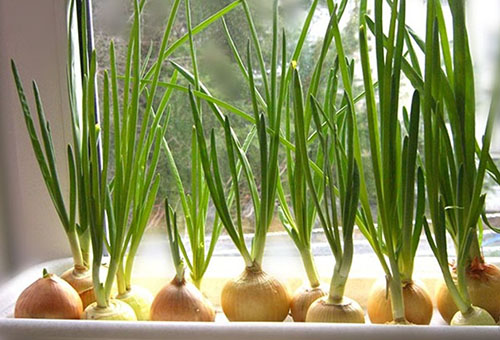
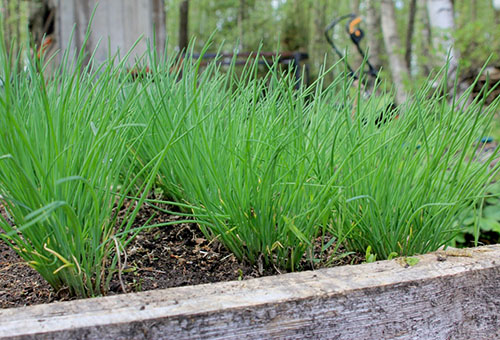
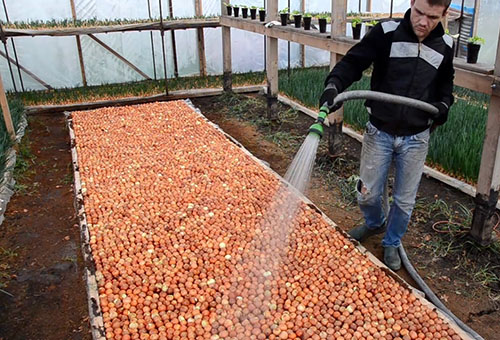
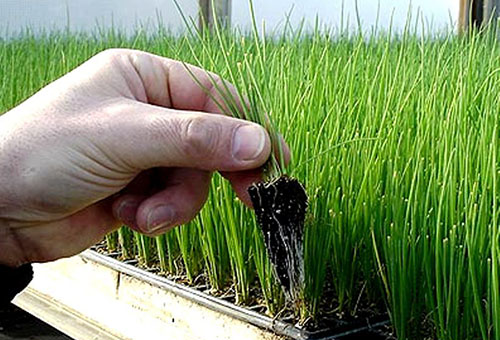
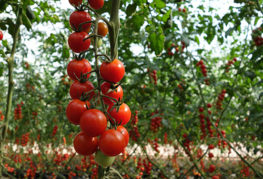
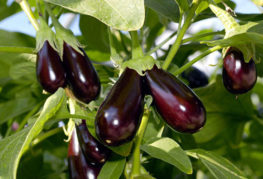
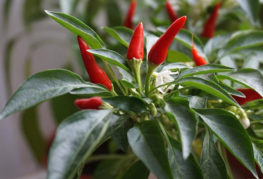
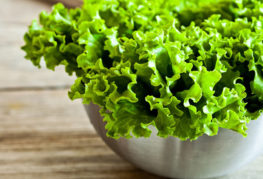
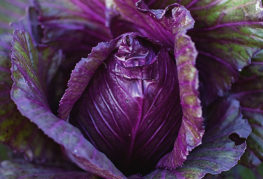
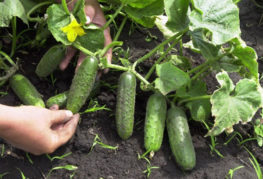
and will be published shortly.